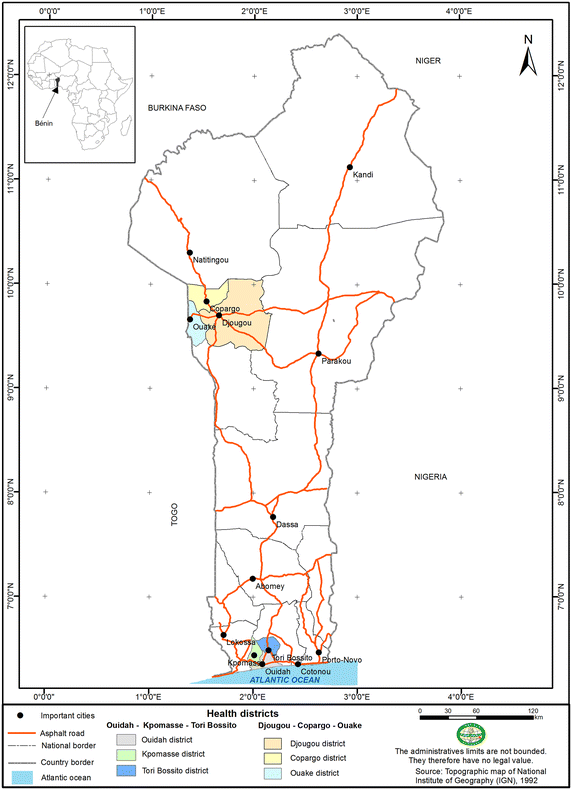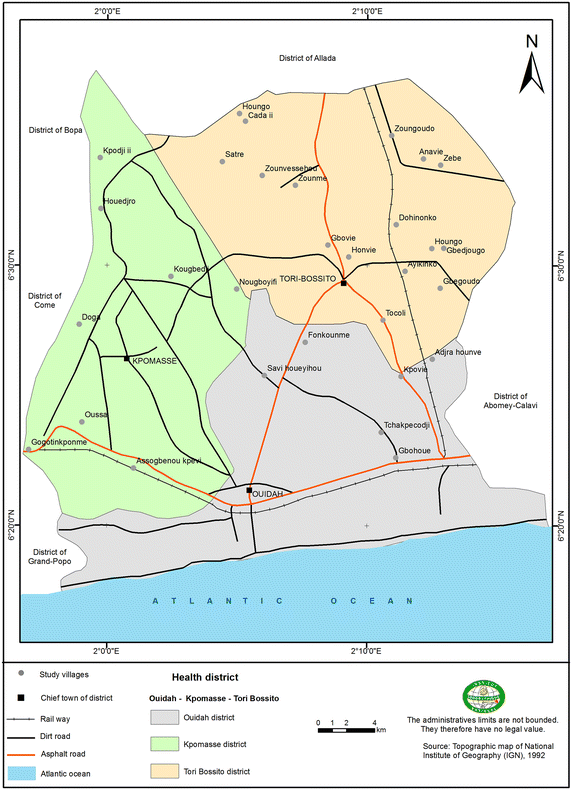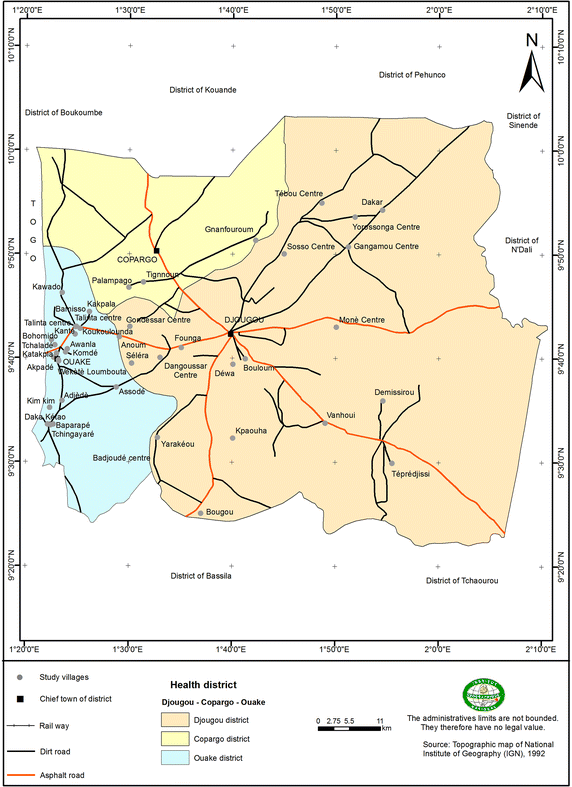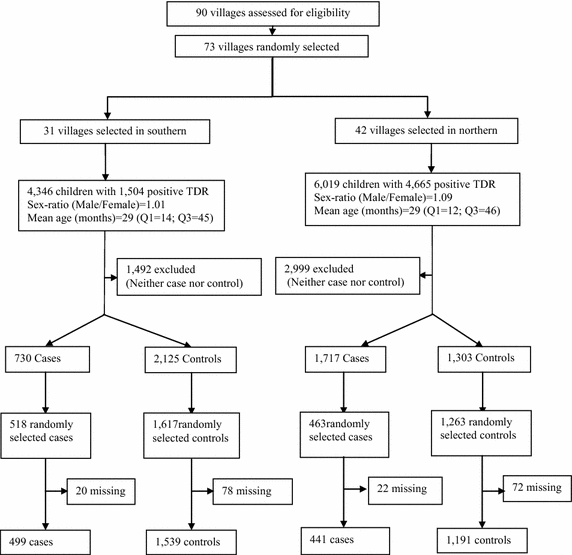Effectiveness of insecticidal nets on uncomplicated clinical malaria: a case-control study for operational evaluation
- PMID: 26891758
- PMCID: PMC4759848
- DOI: 10.1186/s12936-016-1156-2
Effectiveness of insecticidal nets on uncomplicated clinical malaria: a case-control study for operational evaluation
Abstract
Background: In a context of large-scale implementation of malaria vector control tools, such as the distribution of long-lasting insecticide nets (LLIN), it is necessary to regularly assess whether strategies are progressing as expected and then evaluate their effectiveness. The present study used the case-control approach to evaluate the effectiveness of LLIN 42 months after national wide distribution. This study design offers an alternative to cohort study and randomized control trial as it permits to avoid many ethical issues inherent to them.
Methods: From April to August 2011, a case-control study was conducted in two health districts in Benin; Ouidah-Kpomasse-Tori (OKT) in the south and Djougou-Copargo-Ouake (DCO) in the north. Children aged 0-60 months randomly selected from community were included. Cases were children with a high axillary temperature (≥37.5 °C) or a reported history of fever during the last 48 h with a positive rapid diagnostic test (RDT). Controls were children with neither fever nor signs suggesting malaria with a negative RDT. The necessary sample size was at least 396 cases and 1188 controls from each site. The main exposure variable was "sleeping every night under an LLIN for the 2 weeks before the survey" (SL). The protective effectiveness (PE) of LLIN was calculated as PE = 1 - odds ratio.
Results: The declared SL range was low, with 17.0 and 27.5 % in cases and controls in the OKT area, and 44.9 and 56.5 % in cases and controls, in the DCO area, respectively. The declared SL conferred 40.5 % (95 % CI 22.2-54.5 %) and 55.5 % (95 % CI 28.2-72.4 %) protection against uncomplicated malaria in the OKT and the DCO areas, respectively. Significant differences in PE were observed according to the mother's education level.
Conclusion: In the context of a mass distribution of LLIN, their use still conferred protection in up to 55 % against the occurrence of clinical malaria cases in children. Social factors, the poor use and the poor condition of an LLIN can be in disfavour with its effectiveness. In areas, where LLIN coverage is assumed to be universal or targeted at high-risk populations, case-control studies should be regularly conducted to monitor the effectiveness of LLIN. The findings will help National Malaria Control Programme and their partners to improve the quality of malaria control according to the particularity of each area or region as far as possible.
Figures




References
-
- WHO. World Malaria Report 2012. Geneva: World Health Organization; 2012. http://www.who.int/malaria/publications/world_malaria_report_2012/en/acc.... Accessed Feb 2011.
-
- Roll Back Malaria. The global strategic plan Roll Back Malaria 2005–2015. Geneva: Roll Back Malaria Partnership Secretariat; 2005. http://www.rollbackmalaria.org/multimedia/partnershippublications.html#2013 Accessed Aug 2013.
-
- WHO. World Malaria Report 2011. Briefing on revised estimates of cases and deaths. Geneva: World Health Organization; 2011. http://www.who.int/entity/malaria/world_malaria_report_2011/burdenestima.... Accessed Feb 2011.
-
- WHO. Global Malaria Programme, World Health Organization. Geneva: World Malaria Report 2014. http://www.who.int/malaria/publications/world_malaria_report_2014/en/.
-
- Lengeler C. Insecticide-treated bed nets and curtains for preventing malaria. Cochrane Database Syst Rev. 2004;2:CD000363. - PubMed
MeSH terms
LinkOut - more resources
Full Text Sources
Other Literature Sources
Medical
Miscellaneous

